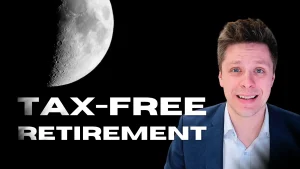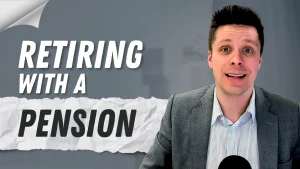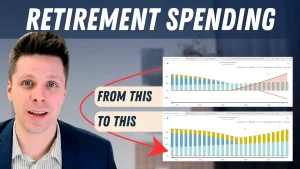[vc_row][vc_column][vc_video link=”https://youtu.be/kcx3bQ_zx1o” css=”.vc_custom_1615868350972{padding-top: 20px !important;padding-right: 20px !important;padding-bottom: 20px !important;padding-left: 20px !important;border-radius: 10px !important;}”][vc_column_text]
What is a reverse mortgage
Where were you when you first heard the term reverse mortgage? If you’re like me, it was through a cheezy commercial on day time TV.
Because of this, I was always skeptical of these products, and I wasn’t the only one. Whenever I would bring it up with someone, I would get a cringed look that shouted Stay Away!
I would argue that people are still skeptical of reverse mortgages, so today, I wanted to pull back the curtain and go over how they work and review a few scenarios where they make sense.
What is a reverse mortgage?
A regular mortgage is simple and straightforward. It’s a loan used to buy a home or property. There’s an interest rate attached to the loan, and you must make regular payments. After some time, the mortgage is paid off, and payments are no longer required.
In theory, a reverse mortgage would be the opposite of this?
“In some ways, yes, and in some ways no,” said Omesh Varma, Business Development Manager of HomeEquity Bank.
“A reverse mortgage can pay you on a monthly or lump sum basis. There’s interest attached to the debt, but no payments are required.”
For example, Bill is 70 years old and has a $500,000 home with no debt. He wants to do a home renovation that will cost $50,000. If Bill took a reverse mortgage on his property, he would have access to $50,000 to complete his renovation.
“A withdrawal from a reverse mortgage is tax-efficient and can allow RRSPs to continue growing tax-deferred,” Varma said.
If Bill were to withdraw funds from his RRSPs, his income might cross the OAS (Old Age Security) Clawback threshold, and his OAS benefits may be affected.
A reverse mortgage is also advantageous as no payments are required. If Bill used a loan or line of credit to fund his renovation, he would be forced to make regular payments. This would reduce his cash flow and leave him with less for day to day expenses.
Rather than making payments, the interest accumulates and comes off the home’s price when Bill eventually sells. Assuming that Bill’s home grows at a rate of 3% per year, it will be worth $779,000 in 15 years.
If he decides to sell at that point, the value of his reverse mortgage would be $95,440 based on an interest rate of 3.89%. Bill would still have over $680,000 in equity.
Here are a few scenarios where using a reverse mortgage would be advantageous.
Purchasing a second property
John and Sally are retiring and would like to purchase a cabin for $150,000. To purchase the cabin, they have the following options:
- Withdraw funds from their RRSPs
- Obtain a regular mortgage
- Obtain a reverse mortgage
If John and Sally wanted to withdraw $150,000 net from their RRSPs, they would have to pay a significant amount of tax. They were also planning on living off their RRSPs, so a large withdrawal would reduce their available capital significantly. They also reviewed the investments within their RRSPs and believe they will grow at a higher rate than what they would pay on a mortgage.
A mortgage would require monthly payments. To pay for the mortgage, John and Sally would be forced to withdraw more from their RRSPs. This would create more taxable income and reduce the amount of investible capital they have available.
Obtaining a reverse mortgage on their home would provide them with the most flexibility. They could use the reverse mortgage payout to purchase the cabin. This would allow them to keep their income low as they wouldn’t be forced to withdraw any extra funds from their RRSPs to pay the mortgage.
Retiring with a mortgage
Jack and Rita are 65 and looking to retire. One of their concerns with retiring is that they still have a significant amount of debt. They still owe $300,000 on their $700,000 home. If they were to retire today, they aren’t sure how they could continue paying for the mortgage as their incomes would drop significantly.
This would in turn, force them to draw down their investments sooner, which would affect the long-term sustainability of their plan. Once their investment accounts are empty, they feel like they would be forced to sell their home.
Alternatively, Jack and Rita can get a reverse mortgage today. They can convert their $300,000 mortgage into a reverse mortgage, and no payments would be required. This would allow their investments to last much longer. By utilizing this strategy, Jack and Rita can stay in their home much longer.
Staying in your home
Jim’s has been in his home for 40 years and he would like to stay in it as long as possible. His monthly income after tax is $5,000, but his expenses are $6,000. Jim has fallen behind and has accumulated credit card debt of $25,000.
He fears he’ll need to downsize his home to generate cash to live off.
Rather than downsizing his home, Jim can take advantage of a reverse mortgage. He can set up a lump sum payout of $25,000 to pay off his credit card debt and then set up a recurring monthly payment for $1,000.
There wouldn’t be any payments on the reverse mortgage and Jim’s income would now match his expenses of $6,000 per month. This will allow Jim to remain in his home for a very long time rather than downsizing today.
[/vc_column_text][/vc_column][/vc_row]





